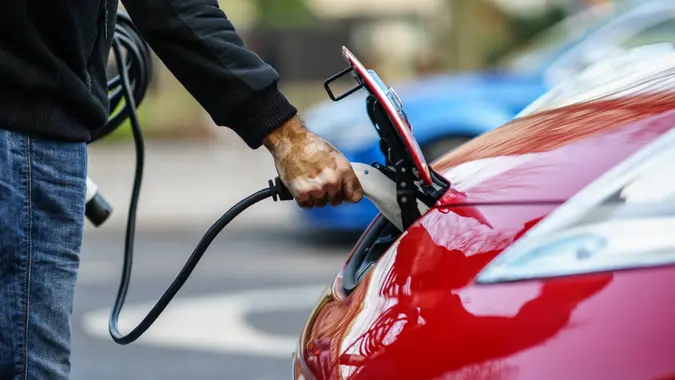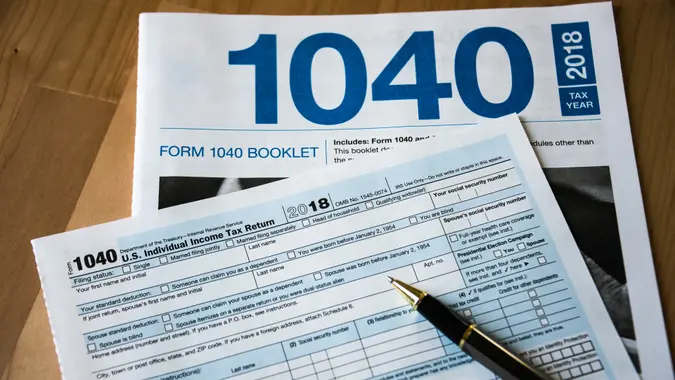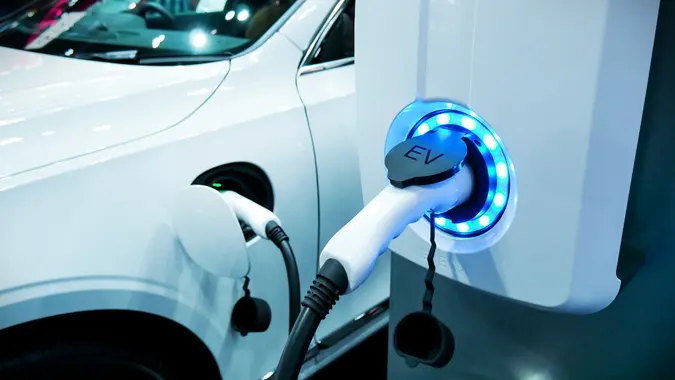Reduce Your Utility Bill With This Tax Credit

Commitment to Our Readers
GOBankingRates' editorial team is committed to bringing you unbiased reviews and information. We use data-driven methodologies to evaluate financial products and services - our reviews and ratings are not influenced by advertisers. You can read more about our editorial guidelines and our products and services review methodology.

20 Years
Helping You Live Richer

Reviewed
by Experts

Trusted by
Millions of Readers
Owning a home can be an expensive endeavor, especially when it comes to making your house more energy efficient. To help offset costs, the IRS offers homeowners tax credits when they install certain energy-efficient equipment.
If you made eligible home improvements in 2023, you may be able to recoup up to 30% of the cost through the Energy Efficient Home Improvement Credit (EEHIC).
The Energy Efficient Home Improvement Credit is available to homeowners with qualified improvement expenses that more efficiently regulate the temperatures of a home. This includes upgrades such as the installation of new doors, windows, skylights, insulation or heat pumps. The credit may also cover the cost of a home energy audit, water heaters and upgrades to electrical systems necessary to install new electric equipment.
Forbes reports that Americans spend an average of $429.33 a month on utilities or $5,151.96 per year. That works out to be about 10% of their annual income, per U.S. Bureau of Labor stats.
Furthermore, Fox Business estimates that the average American spends roughly 42% of their take-home income on household bills (utilities plus housing, auto loans and insurance). So getting 30% on qualifying systems that use solar, wind, geothermal, biomass or fuel cell power to produce electricity, heat water or regulate the temperature in your home is a significant savings.
The credit has no lifetime dollar limit, meaning you can claim the maximum credit every year you make acceptable energy-efficient improvements to your house, from Jan. 1, 2023, to Jan. 1, 2033. It is, unfortunately nonrefundable.
Eligibility and Credit Amounts
Almost any owned home will qualify for the credit, as long as it’s not a new home. To claim the EEHIC, your home must be located in the U.S. and be an existing home that you improve upon. The home must be your primary residence and cannot be used solely for business purposes (if used partially for business, up to 20%, you can receive the full credit; if used more than 20%, the credit will be “based on share of expenses allocable to nonbusiness use”).
According to the IRS, the credit equals 30% of qualified expenses, for a maximum annual credit claim of:
- $1,200 for energy property costs and certain energy efficient home improvements, with limits on doors ($250 per door and $500 total), windows ($600) and home energy audits ($150)
- $2,000 per year for qualified heat pumps, biomass stoves or biomass boilers
Concerning the second set of expenses, switching to a heat pump alone could save a household an average of between $500 and $1,000 per year in heating and cooling costs, according to the Center for American Progress.
Speaking to The New York Times’ Wirecutter about heat pumps benefitting everyone, Alexander Gard-Murray, PhD, a political economist at Brown University and co-author of “3H Hybrid Heat Homes: An Incentive Program to Electrify Space Heating and Reduce Energy Bills in American Homes,” said, “They’re quieter. They offer more control. And at the same time, they’re going to reduce our energy demand and our greenhouse gas emissions. So it’s not just savings. It’s a quality-of-life improvement.”
More From GOBankingRates
 Written by
Written by 

























